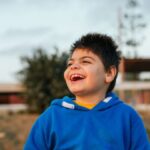January marks National Birth Defects Awareness Month, a time dedicated to increasing knowledge and understanding of birth defects, their causes, and their impacts. Among these, cerebral palsy (CP) stands as a prevalent and significant condition affecting many children and their families. During this National Birth Defects Awareness Month, Children’s Cerebral Palsy would like to highlight what cerebral palsy is, living with the condition, and what can be done to support those affected.
Understanding Cerebral Palsy
Cerebral palsy is a term that encompasses a collection of neurological disorders that primarily affect a person’s ability to move and maintain balance and posture. As the most common motor disability in childhood, the impacts of cerebral palsy are profound and life-long. It originates from abnormalities or damages to the developing brain, generally occurring before birth. This section aims to unravel the intricacies of cerebral palsy, including its prevalence and causes, the different types, and the early signs and diagnosis process. This understanding forms an essential cornerstone for children with cerebral palsy and those who wish to offer their support.
Prevalence and Causes
According to the CDC, cerebral palsy affects about 1 in 323 children in the United States. While the cause of cerebral palsy is not always clear, it has been linked to a wide range of factors, including genetic mutations, brain injuries during birth or infancy, infections during pregnancy, and lack of oxygen to the brain. However, in most cases, the exact cause remains unknown.
Types of Cerebral Palsy
Cerebral palsy (CP) presents in various forms, each with distinct characteristics. Spastic CP is the most common, affecting about 80% of those with CP. This type is marked by increased muscle tone, resulting in stiffness and often leading to movement difficulties that appear rigid or uncoordinated. Understanding the nuances of spastic CP helps in addressing the specific challenges faced by individuals with this condition.
Contrastingly, ataxic and dyskinetic CP are less common but equally impactful. Ataxic CP affects balance and coordination, stemming from damage to the brain’s motor control centers, often making tasks requiring precision, like writing, challenging. Dyskinetic CP, caused by brain injuries during late pregnancy or early birth, is characterized by fluctuating muscle tone and involuntary movements, affecting various body parts and complicating activities such as speaking and eating. Recognizing these types of CP is crucial for tailored care and management strategies.
Living With Cerebral Palsy
During National Birth Defects Awareness Month, it’s essential to recognize the challenges faced by those living with cerebral palsy and their families. Despite these difficulties, children with CP learn, develop friendships, and achieve milestones just like other kids. While some individuals may face more severe impacts than others, early intervention and appropriate support are key elements in helping them thrive.
Early Intervention
Early detection of CP is crucial for the effective management of the condition. Parents and caregivers might notice delays in developmental milestones, unusual muscle tone, and difficulties in feeding or motor skills. Recognizing these signs and seeking prompt medical attention can help mitigate the effects of CP and improve a child’s long-term outcomes. Early intervention programs, such as physical therapy, occupational therapy, speech therapy, and specialized education, can provide tailored care to meet the unique needs of children with cerebral palsy.
Management and Treatment
Managing CP is a lifelong process that involves a multidisciplinary approach. There is no cure, but treatment can improve the lives of those with the condition. Medications, assistive devices, and therapies may help manage symptoms and promote functional independence. However, the most crucial aspect of management is ensuring individuals with CP are included in everyday activities and have access to supportive environments.
Support and Resources
As we observe National Birth Defects Awareness Month, it’s vital to emphasize the importance of support and resources for those living with conditions like cerebral palsy. This month is an ideal opportunity to reach out, learn more, share experiences, and discover the vast array of resources available. These resources not only provide practical assistance but also help foster a sense of community and shared understanding. However, it’s crucial to remember that each experience with cerebral palsy is unique, and how we discuss and approach these experiences should respect and honor that individuality.
Parent and Caregiver Support
Parents and caregivers of children with cerebral palsy may face significant challenges, both emotionally and practically. Seeking support from other parents and caregivers who have faced similar experiences can be incredibly beneficial. Several organizations offer support groups, education, and resources for families of children with CP. These communities provide a safe space to share struggles, joys, and tips on coping with the daily realities of living with cerebral palsy.
Advocacy and Awareness
In addition to providing support, it’s essential to advocate for the needs and rights of individuals with cerebral palsy. Advocacy can take many forms, from raising awareness to promoting inclusive policies and supporting research efforts. As we observe National Birth Defects Awareness Month, remember that each person with cerebral palsy has unique challenges and abilities that deserve recognition and respect.
Explore Our Cerebral Palsy Services
In the spirit of National Birth Defects Awareness Month, we encourage you to take a step further in understanding conditions like cerebral palsy. At Children’s Cerebral Palsy, we are dedicated to supporting children living with this condition, offering specialized services to meet their unique needs. We believe in creating an environment that fosters growth, inclusivity, and resilience.
Children’s Cerebral Palsy is committed to enhancing the lives of those with cerebral palsy and helping them achieve their fullest potential. If you need guidance and support or are seeking resources related to cerebral palsy, we are here for you. Please don’t hesitate to contact us. Together, we can make a difference this National Birth Defects Awareness Month and beyond.






